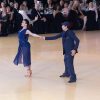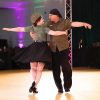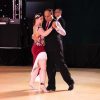If you ask veteran dancers what separates a pleasant tanda from a life-changing one, you’ll hear the same answer again and again: Argentine Tango connection. It is the felt bond that makes simple walking feel profound and turns a small pause into poetry. When dancers talk about “magic” on the floor, they are describing Argentine Tango connection—two people breathing with the music, co-creating a conversation that neither could have danced alone.
At Tango Canada Academy, we teach technique, vocabulary, and musicality. But every drill, pattern, and practice is ultimately in service of Argentine Tango connection. Steps are the letters; phrasing is the grammar. Connection is the meaning. This article is a practical and inspiring deep dive into how to cultivate Argentine tango embrace from your first class to your most nuanced tandas, so your dancing feels grounded, expressive, and truly shared.
What Dancers Really Mean by Connection
A Shared Center, Not a Fixed Shape
Argentine Tango connection is not a rigid frame; it’s a living interface. Think of two centers agreeing to move as one. The embrace is the visible part, but the real channel for Argentine Tango connection runs through posture, breath, and subtle tone in the torso and back. When those elements are aligned, the smallest suggestion is enough to guide direction, timing, and intention.
Micro-communication and Listening
- A change in ribcage pressure can announce a pivot before a foot leaves the floor.
- A quiet exhale can signal a pause, making Argentine Tango connection feel effortless.
- A slight rise or softness of tone can cue a turn without grabbing or pushing.
The Embrace as an Instrument
The abrazo has volume control. In close embrace, Argentine Tango connection is intimate and compact; in open embrace, it is clearer visually and offers more range for turns. Both are valid instruments. Skilled partners play both—adjusting the “volume” of the embrace to the music, the density of the floor, and the comfort of the couple—so Argentine tango embrace remains clear and kind.
Two Roles, One Conversation
Connection thrives when leaders propose with clarity and followers respond with presence. The role language matters less than the shared agreement: clear intention, balanced reception, and a mutual promise to protect each other’s axis—this is Argentine tango embrace at work.
The Physiology of Feeling: Posture, Axis, Tone
Posture Creates a Reliable Channel
Argentine Tango connection improves when both dancers align the head, ribs, and pelvis. Keep the weight a touch forward over the balls of the feet; let the knees stay soft. This small forward intention stabilizes the channel of Argentine Tango connection so signals travel through the torso rather than the hands.
Axis: Your Portable Stability
Without axis, communication gets noisy. With axis, even complex figures feel simple. A balanced pivot or clean weight transfer tells your partner, “I’m available and listening,” which is the everyday language of Argentine tango embrace.
Tone: Enough, Not Excess
Tone is the Goldilocks principle: not too much, not too little. Over-tension blocks nuance; under-tone blurs intention. When you can raise or lower tone smoothly, you support Argentine Tango connection like a sound engineer balances a mix—everything becomes clear without becoming loud.
Walking as Poetry: How the Simplest Step Becomes the Deepest
The Caminata: Connection in Motion
Walking is not a transition; it is the dance. A clean projection, a grounded transfer, a mindful collection—these are the brushstrokes. When both partners walk with parallel presence, Argentine Tango connection turns everyday steps into a moving embrace.
Three Walk Cues to Transform Your Tanda
- Project from the standing leg; let the free leg respond, not lunge.
- Transfer weight fully, then collect with intention.
- Let the breath set the tempo—your lungs are the metronome of Argentine Tango connection.
Musicality as the Nervous System of Connection
Pulse, Phrase, and Pause
Argentine Tango connection blooms when partners agree on the musical layer they’re dancing. Pulse is the anchor; phrase is the sentence; pause is the punctuation. Choose one layer per tanda and keep it consistent. That choice alone makes Argentine Tango connection feel inevitable rather than effortful.
Orchestras as Connection Teachers
- Carlos Di Sarli: long lines and elegant walking—perfect for steady Argentine Tango connection.
- Juan D’Arienzo: crisp rhythm and rebounds—great for playful clarity in tight spaces.
- Osvaldo Pugliese: dramatic suspensions—ideal for elastic Argentine tango embrace with breathy pauses.
- Aníbal Troilo: lyrical nuance—teaches you to hear intimacy in small gestures.
Styles of Embrace, Styles of Connection
Milonguero, Salon, and Nuevo—Same Conversation, Different Accents
Milonguero favors close, compact movement; salon adds space for turns and embellishments; nuevo explores elasticity and off-axis play. Argentine tango embrace is the constant. When posture, axis, and tone are honest, style shifts feel like dialects of the same language, not different languages.
Adapting Without Losing Yourself
- In close embrace, keep steps small and transfers complete to keep Argentine Tango connection quiet and precise.
- In open embrace, maintain torso clarity so added space doesn’t dilute intention.
- In experimental moments, return to the pulse—your compass for Argentine Tango connection.
Floor Craft: Connection With the Whole Room
Safety as a Love Language
The best couples do not dance alone; they dance with everyone. Respecting lanes and space makes Argentine Tango connection extend beyond your embrace. Your navigation reassures partners around you, lowering anxiety in the room. The safer the room feels, the deeper Argentine tango embrace becomes for all.
The Courtesy Triad
- Do not overtake in crowded lanes.
- Shrink steps when visibility is limited.
- Acknowledge gentle collisions with an apology and a smile.
These micro-courtesies are the social glue of Argentine tango embrace.
Training the Invisible: Practical Exercises
A Five-Minute Daily Circuit
- Posture stack: head–ribs–pelvis alignment (60 seconds).
- Slow walk: one step every two counts, full collection (120 seconds).
- Quarter-turn pivots both directions (60 seconds).
- Embrace breathing: subtle expand/soften on inhale/exhale (60 seconds).
Repeat this circuit and you’ll notice Argentine Tango connection stabilize across partners and floors.
Partner Sensitivity Drill
Stand in embrace. One partner shifts weight without moving the feet; the other identifies which foot is free—no looking down. This neural tune-up sharpens the channel of Argentine tango embrace in minutes.
Musical Layer Practice
Choose one orchestra and one intention: walk the pulse, phrase the side steps, or pause at the comma. Agree with your partner before the tanda. That agreement is a shortcut to confident Argentine Tango connection.
11 Myths About Connection (And What to Do Instead)
- Connection means squeezing tighter.
Do this instead: lighten the arms; organize through the torso for clean Argentine Tango connection. - Followers must anticipate to be musical.
Do this instead: wait, then move decisively—better Argentine Tango connection and clearer phrasing. - Leaders should “make it happen.”
Do this instead: propose; let the follow complete—shared agency improves Argentine tango embrace. - Big steps show confidence.
Do this instead: smaller steps, full transfers; connection reads stronger. - Close embrace fixes everything.
Do this instead: build axis first; then close the space to enrich Argentine Tango connection. - Musicality is for advanced dancers only.
Do this instead: start with pulse; it’s beginner-friendly Argentine Tango connection. - A good connection means never adjusting.
Do this instead: micro-adjust embrace and tone; adaptability is mature Argentine Tango connection. - Floor craft is separate from connection.
Do this instead: safety is part of Argentine Tango connection with the whole room. - More figures create more chemistry.
Do this instead: more listening creates instant Argentine tango embrace. - You need the perfect partner.
Do this instead: become the partner who makes Argentine Tango connection possible. - Practice is only for steps.
Do this instead: drill breath, axis, and tone; that’s the foundation of Argentine Tango connection.
Common Pitfalls and Precise Fixes
Over-Leading With the Hands
Hands are the last messengers, not the first. Re-route intention through the sternum and back. The moment your torso speaks, Argentine tango embrace clears up.
Anticipation That Breaks Timing
Followers who guess get early; leaders who rush get heavy. Solve both by slowing the start of each movement: wait for shared intention, then move. Shared timing is shared Argentine Tango connection.
Collapsing the Chest in Pauses
Pauses are not stops; they’re suspensions. Keep length through the spine and a whisper of tone in the back. Suspended posture keeps Argentine Tango connection alive even in stillness.
A Four-Week Connection Plan
Week 1: Channel Building
- Daily posture stack + slow walk + embrace breath.
- Practica focus: walk the pulse for one tanda.
- Goal: stable axis; reliable Argentine tango embrace in simple walking.
Week 2: Listening Skills
- Add sensitivity drill (weight-shift identification).
- Practica focus: agree on phrasing changes; pause at musical commas.
- Goal: clearer, calmer Argentine Tango connection during transitions.
Week 3: Turn Clarity
- Quarter-turn pivots; add gentle side steps on phrase changes.
- Practica focus: compact turns in crowded lanes.
- Goal: Argentine Tango connection that survives traffic.
Week 4: Embrace Adaptability
- Practice micro-expansion/softening with breath.
- Milonga focus: start in inner lanes, keep steps small, protect the room.
- Goal: resilient Argentine tango embrace across partners and conditions.
Why Choose Tango Canada Academy
Tango Canada Academy is known for turning lofty concepts into repeatable habits. We teach posture, axis, and musical phrasing as a practical path to Argentine Tango connection—not as abstract ideals. Our classes are structured for steady progress, our practicas give you a safe sandbox, and our community culture prioritizes kindness, clarity, and shared learning.
What You’ll Experience
- A progressive curriculum that links technique to Argentine tango embrace from day one
- Instructors with international teaching and performance experience
- Weekly practicas and regular socials to turn drills into embodied skill
- Clear feedback loops: micro-drills, video notes, and actionable cues
- Optional private sessions for targeted breakthroughs in Argentine Tango connection
If your goal is dancing that feels honest, musical, and shared, we’re here to help you cultivate Argentine tango embrace you can trust on any floor.
Canadian Resources to Support Your Learning
Explore national programs and resources that enrich training, culture, and community participation:
- Canada Council for the Arts — Dance (funding and initiatives that support dance learning and creation)
- Canadian Heritage — Arts and Cultural Participation (programs that foster cultural engagement and education)
Use these resources to find festivals, workshops, and learning opportunities that reinforce your practice and deepen Argentine Tango connection beyond the studio.
Bringing It All Together: The Meaning Behind the Movement
When the music begins, you don’t dance steps; you dance a relationship to time, space, and another person. That relationship is Argentine Tango connection. With aligned posture, stable axis, responsive tone, and clear musical choices, you’ll discover that you don’t need many figures to say something beautiful. A single walk, a quiet pivot, a shared pause—these are enough when Argentine tango embrace is alive.
Tango Canada Academy invites you to practice the art that makes every movement matter. Start with a trial class, visit a practica, and feel how quickly intentional training turns into real Argentine Tango connection on the floor. Your most meaningful tandas are closer than you think.
Frequently Asked Questions
-
What is the simplest way to feel Argentine Tango connection in my first month?
Start with posture, slow walking, and breath. Agree on a musical layer with your partner (just the pulse). This trims the noise and lets Argentine Tango connection appear quickly. -
Does close embrace guarantee Argentine Tango connection?
No. Close embrace can amplify both strengths and weaknesses. Build axis and tone first, then close the space. That sequence makes Argentine Tango connection reliable rather than forced. -
How can leaders clarify intention without pushing and still keep Argentine Tango connection?
Propose direction from the torso, not the hands. Move your center first, then your step. This timing preserves comfort and sharpens Argentine Tango connection. -
How can followers avoid anticipation while staying musical in Argentine Tango connection?
Listen for intention through the torso and back, then move decisively on your own axis. Waiting to hear the “ask” actually improves timing and preserves Argentine tango embrace. -
Which musical strategies most quickly improve Argentine Tango connection?
Pick one per tanda: walk the pulse (Di Sarli), add light rebounds (D’Arienzo), or breathe into suspensions (Pugliese). Consistent strategy equals consistent Argentine Tango connection. -
What should I practice at home to strengthen Argentine Tango connection?
A five-minute circuit: posture stack, slow walk with full collection, quarter-turn pivots, and embrace breathing. These fundamentals are the fastest path to dependable Argentine Tango connection. -
How do I maintain Argentine Tango connection in crowded milongas?
Shrink step size, complete every transfer, and prioritize lanes. Courtesy to the room reduces stress and keeps Argentine Tango connection calm and clear even in traffic.








Comments are closed